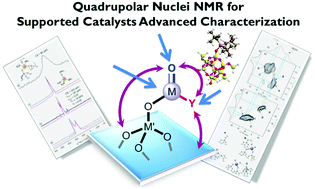Solid-state NMR of quadrupolar nuclei for investigations into supported organometallic catalysts: scope and frontiers
D. Grekov, T. Vancompernolle, M. Taoufik, L. Delevoye, R. M. Gauvin
文献索引:10.1039/C7CS00682A
全文:HTML全文
摘要

The rational development of heterogeneous catalysts is a prerequisite for improving current catalytic technologies. One of the most successful approaches to achieve this goal is the grafting of organometallic complexes onto a given support, via surface organometallic chemistry (SOMC). In such cases, the immobilization of (transition) metal centres onto an inorganic support affords single-site catalysts with precise tuning of the coordination sphere and thus target-specific catalytic reactivity. In this context, the precise characterization of the surface sites by several spectroscopic techniques in parallel is of paramount importance. Solid-state NMR, in particular for half-integer quadrupolar nuclei, is a method that has increased its scope in the field of catalysis, especially due to recent methodological breakthroughs, occasionally combined with DFT calculations. In this tutorial review, we provide an overview of the most robust and efficient NMR experiments for half-integer quadrupolar nuclei, from simple one-dimensional acquisition under static and MAS conditions up to high-resolution and heteronuclear correlation two-dimensional spectra, as illustrated by selected examples.
|
Structure-based design of targeted covalent inhibitors
2018-04-05 [10.1039/C7CS00220C] |
|
Recent advances in radical-based C–N bond formation via phot...
2018-04-05 [10.1039/C7CS00572E] |
|
Correction: Spotting the differences in two-dimensional mate...
2018-04-04 [10.1039/C8CS90042F] |
|
Wearable and flexible electronics for continuous molecular m...
2018-04-03 [10.1039/C7CS00730B] |
|
Multimetallic nanosheets: synthesis and applications in fuel...
2018-04-03 [10.1039/C8CS00113H] |